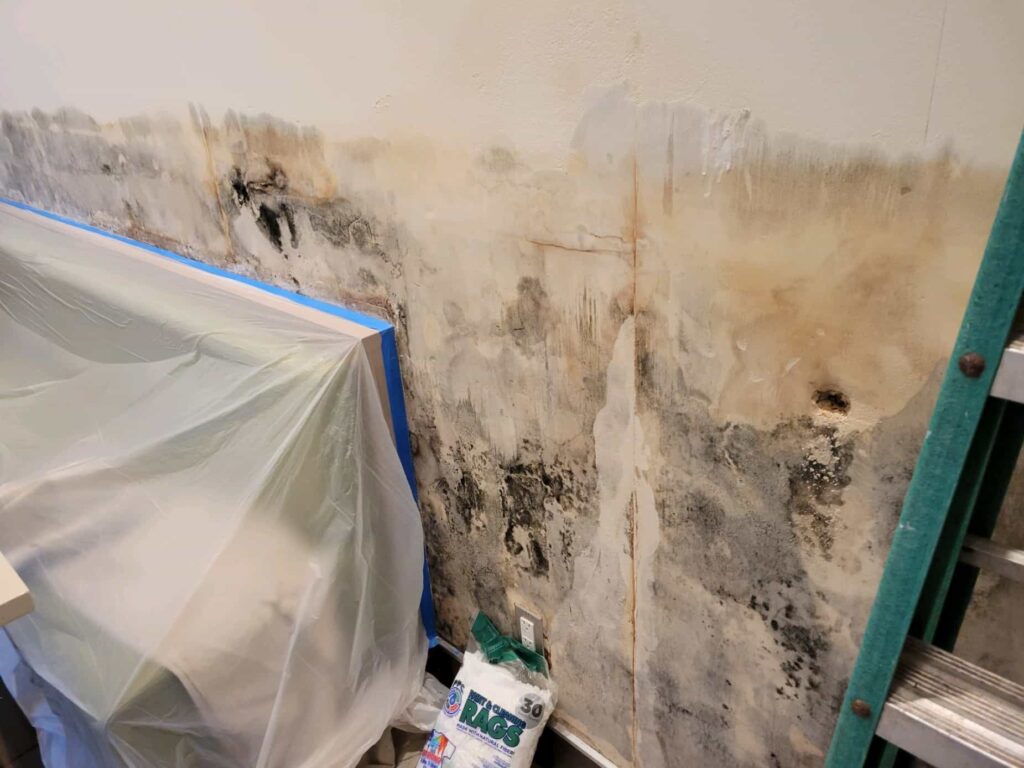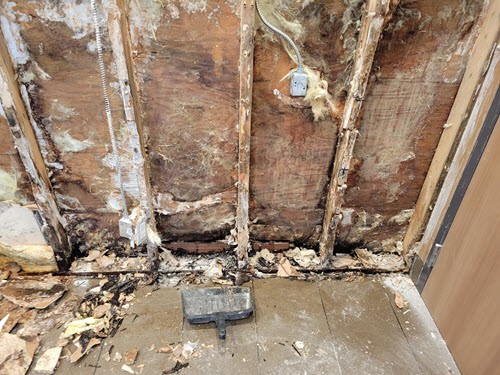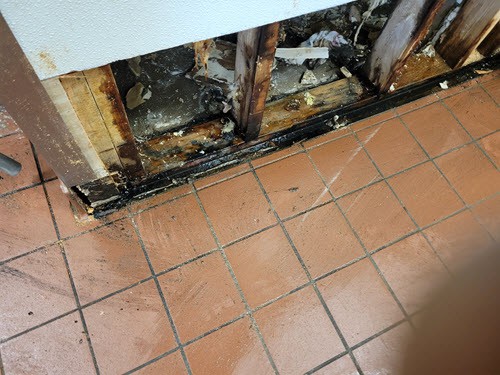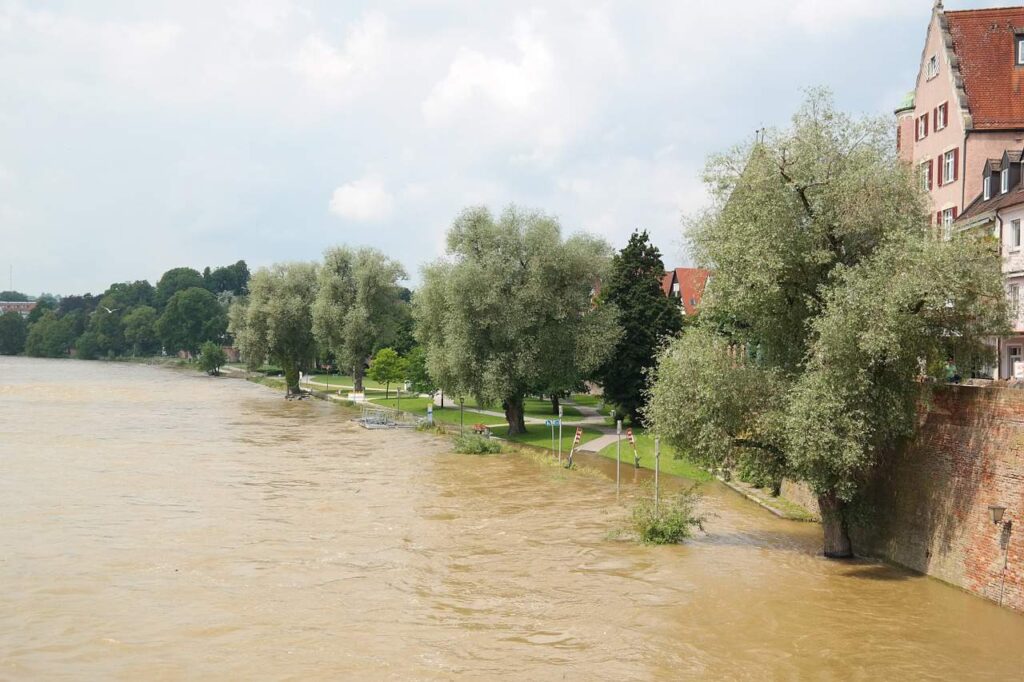With the western part of Washington and Oregon getting hit with yet another round of heavy rains, flooding is expected in many areas. While floods are the usual cause of water damage, sometimes it’s those small leaks that can cause major issues – like mold. And what’s worse, small and/or slow leaks often go undetected until there is a HUGE problem. Case in point: a restaurant remodel uncovered massive mold behind the walls.
One of the contractors we sometimes work with in water damage restoration shared these photos with us recently. They had been called in by the restaurant owner to do some repair work to a vinyl mural in the main entry area. But as the contractor stripped off the mural, what was underneath was something of a shock: lots of black mold BEHIND the mural.

Surface mold like this can occur when there is moisture trapped, which might have been the case. But how did the water get between the vinyl mural and the wall? Obviously the wall had to be taken out, and that revealed even more trouble.
The area inside the studs was still damp, and there was some standing water on the floor. And there was another type of mold – fuzzy white, some of which appeared to be fresh.

But where was the water coming from?
Roof leaks are often the culprit, so a team went up top on the building, but no leaks.Further investigation involved going around to the back side of the wall – the restaurant kitchen. And there the source of the water was found. There was a slop sink adjacent to the area show here, and the floor slanted just enough that water often pooled up at the edge of the wall. And since no sealant was used when the walls were constructed, that water was slowly seeping under the bottom of the wall and being wicked up by the wood and insulation. And that warm kitchen air was the perfect breeding ground for mold.

This particular situation is a good example of why whenever you spot standing water anywhere – or mold – getting to the source of the water and then making sure it’s repaired properly so it doesn’t happen again is crucial. Mold can be a health issue for many, causing severe respiratory issues in some. And if left alone, structural damage can occur. Here, the insulation needed to be removed, the entire area cleaned with mold and mildew remover, some of the studs replaced, and then a raised, sealed base to prevent water from infiltrating into the wall again.
As a biohazard remediation company, we’re well aware of the problems that can occur from something as simple as water. And we’re here to help in the greater Spokane and Seattle areas if you have issues with water damage.





